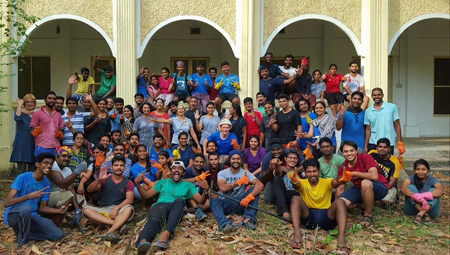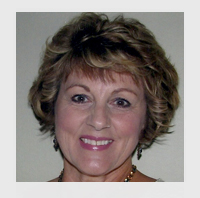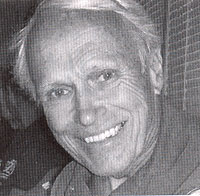Viewpoint: An Embodied Spirituality
Printed in the Fall 2016issue of Quest magazine.
Citation: Boyd, Tim, "Viewpoint: An Embodied Spirituality" Quest 104.4 (Fall 2016): pg. 96-97
By Tim Boyd, President
 During the lifetime of Joy Mills, and particularly in her later years, she frequently would focus on one particular question: “What does it mean to be fully human?” The answer seems obvious until you actually have to think about it. Clearly it involves more than merely standing on two legs and thinking. In The Secret Doctrine, H.P. Blavatsky says that the human results from the coming together of three evolutionary streams, “the Monadic (or Spiritual), the Intellectual, and the Physical Evolutions.” She goes on to say that “each of these three systems has its own laws, and is ruled and guided by different sets of the highest Dhyanis . . . Each is represented in the constitution of Man . . . and it is the union of these three streams in him, which makes him the complex being he now is.”
During the lifetime of Joy Mills, and particularly in her later years, she frequently would focus on one particular question: “What does it mean to be fully human?” The answer seems obvious until you actually have to think about it. Clearly it involves more than merely standing on two legs and thinking. In The Secret Doctrine, H.P. Blavatsky says that the human results from the coming together of three evolutionary streams, “the Monadic (or Spiritual), the Intellectual, and the Physical Evolutions.” She goes on to say that “each of these three systems has its own laws, and is ruled and guided by different sets of the highest Dhyanis . . . Each is represented in the constitution of Man . . . and it is the union of these three streams in him, which makes him the complex being he now is.”
In other contexts HPB says that humanity and the “hierarchy of spiritual beings” associated with it are “like an army” composed of its “corps, divisions, brigades, regiments, and so forth, each with its separate individuality or life, and its limited freedom of action and limited responsibilities; each contained in a larger individuality, to which its own interests are subservient, and each containing lesser individualities in itself.” The picture she paints is consistent with our experience of the worlds within worlds that we inhabit. It is, however, challenging to an entrenched worldview that insists that all things are divisible into distinct essentials. Much like the view that believed the atom to be the ultimate and irreducible particle of physical matter, our desire to consider ourselves as some type of unit—simple, uncomplicated, and easily described—does not conform with reality. The human being is more nuanced than it would seem from the popular understanding of the famous quote from Pierre Teilhard de Chardin: “I am not a human being having a spiritual experience. I am a spiritual being having a human experience.” In this cooperative human project involving the “highest Dhyanis” of three evolutionary streams, who can point to a clear dividing line between spiritual and human? The spiritual being or entity seems to be deeply, perhaps inextricably, imbedded in matter, at least for the duration of this human cycle.
In the spiritual traditions of the world, there are beautiful stories and images that speak about what it means to be human. One such story is about a blind man and a crippled man. Traditions as varied as those of Central Africa, Aesop’s Fables, and the Hopi Indians all tell the story of the blind and the crippled man coming together to complete a journey or accomplish a task. In the yoga philosophy of India, the same story appears, with the blind man symbolic of prakriti, matter, and the lame man symbolizing purusha, spirit or soul. The one who is strong but cannot see carries and is directed by the one with vision who has no capacity to move. The story is told to illustrate the human dilemma of the interaction between “highest spirit and lowest matter.”
In the Christian tradition there is a popular image of the birth of the Christ that depicts the baby in a feeding trough for animals—a manger—surrounded by angels, shepherds, his parents, sometimes the Magi, and an assortment of farm animals. This image has been developed over time by numerous artists, many of them having the benefit of profound study and spiritual insight. The imagery depicts, in ways that words cannot, the nature of being human, and its many dimensions. In the midst of an angelic/divine nature, human potentials of all levels, and a strictly animal nature, the Christ consciousness is born and nurtured.
All of this brings me to something I have been witnessing at the Theosophical Society’s international headquarters in India. Seventeen years ago a man named Peter Van Geit moved to Chennai. At the time he thought it was just a temporary posting with the multinational company which employed him. As is popular in much of Europe, in his native Belgium he had been fond of walking in nature. When he came to Chennai, he continued this custom, seeking out natural places nearby. His passion spread, and soon he found himself leading a group of Indian trekkers and searching out places of natural beauty farther afield. A group formed around him who called themselves “The Chennai Trekkers.”
On one trip to a well-known waterfall just two hours outside of the city, he encountered something that changed things for him and the Trekkers. He saw that the beauty of this site had attracted many people, but in their carelessness the place had been marked with accumulations of trash. Rather than bemoan the human imprint, he and his Trekkers decided to do something about it. The group scheduled combination trekking and cleanup trips to the site. Peter soon realized that the same problem was overwhelming them much closer to home, at the Adyar River. This is where we met.
At the time of this writing, every Friday for the past ten to twelve weeks, from 5:45 a.m. until 8 a.m., anywhere from sixty to 100 young people—Trekkers and others they have attracted—have been coming to the TS campus to clean up the garbage that accumulated along the riverbank during the historic flooding this past November and December. To date they have literally removed many tons of trash. Although we at the TS are benefitting from the work, their focus is on that stretch of the river emptying into the Bay of Bengal, of which our campus is on the last two kilometers.
| Chennai Trekkers river cleanup crew |
The remarkable thing to see is the attitude that these twenty-something-year-olds exhibit toward their part in what many would regard as the lowly or inglorious act of picking up garbage. For them it is never a chore. It is a joy. Everywhere you look, they are snapping selfies with their friends and the mounting piles of garbage they are gathering. They also have educated themselves. Talk to any one of them about what they are doing, and you will hear about the effect of different types of trash on the environment and about plastics, particularly the nonrecyclable single-use plastics that do not break down and are increasingly choking the planet.
In all of the beauty of their cooperative work, they recognize that they are fighting a losing battle. The trash is being redeposited up and down the river’s length at a much faster rate than they can take it away. Much as was the case in the founding days of the TS, these young people find themselves drawn to a cause and a vision for humanity that H.P. Blavatsky described as a “forlorn hope.” But they soldier on, selfie after selfie, Facebook and Twitter post after Facebook and Twitter post, convinced that their clarity, the rightness of their cause, their selflessness, and the constant repetition of their noble message through social media must bring about the necessary shift in consciousness before it is too late. It is truly a sacred thing they are doing.
In less than 200 years humanity has literally become a force of nature, distorting the natural world, changing planetary weather patterns, triggering what has been widely recognized as the “sixth great mass extinction” in the planet’s known history. Human population has reached previously unrecorded numbers and is fast climbing. For whatever reason, the rush of souls to incarnate at this time of both profound challenge and profound opportunity is unprecedented. We find ourselves in that crisis moment for which the reintroduction of Theosophy and its Ageless Wisdom was intended, but its ideas, grand and timeless as they are, are in and of themselves insufficient for the need of the time. The need now is for the “fully human” being—one who recognizes the flame of his or her highest potential Self, burning in this cave of matter; who sees that abdication of involvement in this world and its mounting demands in exchange for some imagined spiritual state is a caricature of a genuine spirituality which embraces and ennobles all things with an awareness of an all-pervading divinity.
Although this attitude is thankfully not unique to India, that is the place where I have seen it up close. Without knowing it in a conscious way, these young people who find such joy and purpose in the world’s waste are harbingers of the “new” spirituality, an embodied approach that embraces the inevitability of involvement in the range of realities we encompass. In the words of Saraha, the great Tibetan saint, “Here in this body are the sacred rivers. Here are the sun and moon and the pilgrimage places. I have never encountered a temple as blissful as my own body.” The Higher Self, the Christ consciousness, can never stand in isolation. It is born in the midst of all of the components of our nature—angelic to bestial—in order to bring new life and new vision.



 As with physical needs, it is essential that we understand the emotional, mental, and spiritual needs of the dying individual in order to be of assistance. To understand these needs, expressed or unexpressed, it is helpful to consider what is known of the actual experiences of the dying. Awareness of these will help us to feel more comfortable in their presence and also to communicate more helpfully, making the entire experience less intimidating.
As with physical needs, it is essential that we understand the emotional, mental, and spiritual needs of the dying individual in order to be of assistance. To understand these needs, expressed or unexpressed, it is helpful to consider what is known of the actual experiences of the dying. Awareness of these will help us to feel more comfortable in their presence and also to communicate more helpfully, making the entire experience less intimidating. National secretary David Bruce reminds me that this year is the 400th anniversary of the death of Shakespeare. Which raises a question: what exactly was Shakespeare’s worldview?
National secretary David Bruce reminds me that this year is the 400th anniversary of the death of Shakespeare. Which raises a question: what exactly was Shakespeare’s worldview? The call came at 2:15 a.m. It was my first on-call summons since I had become a hospice nurse a month earlier. I dressed quickly, running a comb through my sleep-flattened hair, feeling more than a little as firemen do as they jump into their boots and slide down the pole when the alarm sounds. I reviewed the patient’s name and address and the message the triage nurse had given me on the phone: “Madeline D. is close to dying. Her family is expecting you as soon as you can get there.” On the way, I carefully remembered what I had been taught to do when I arrived. My heart would tell me what to say.
The call came at 2:15 a.m. It was my first on-call summons since I had become a hospice nurse a month earlier. I dressed quickly, running a comb through my sleep-flattened hair, feeling more than a little as firemen do as they jump into their boots and slide down the pole when the alarm sounds. I reviewed the patient’s name and address and the message the triage nurse had given me on the phone: “Madeline D. is close to dying. Her family is expecting you as soon as you can get there.” On the way, I carefully remembered what I had been taught to do when I arrived. My heart would tell me what to say. For many years I believed that retirement was only a sad commentary on the unpleasantness of most work. After all, if work is an unpleasant necessity and to be avoided, as it is for many, then why not seek relief at every opportunity? Weekends are to the work week as vacation is to the year, as retirement is to a life’s work. The assumption is that leisure is what’s enjoyable and work is the price one pays to get it. The solution, of course, is to have not just a job but a satisfying life’s work, thereby blurring the distinction between work and nonwork.
For many years I believed that retirement was only a sad commentary on the unpleasantness of most work. After all, if work is an unpleasant necessity and to be avoided, as it is for many, then why not seek relief at every opportunity? Weekends are to the work week as vacation is to the year, as retirement is to a life’s work. The assumption is that leisure is what’s enjoyable and work is the price one pays to get it. The solution, of course, is to have not just a job but a satisfying life’s work, thereby blurring the distinction between work and nonwork.